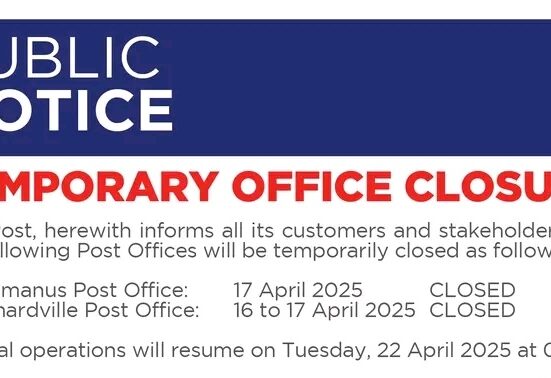Namibia, a country characterized by vast deserts, rugged terrain, and breathtaking landscapes, faces one of the most pressing issues of the modern age: water scarcity. As one of the driest countries in sub-Saharan Africa, Namibia’s arid environment and erratic rainfall patterns make access to water a significant challenge for its population, economy, and ecosystems. Water scarcity impacts nearly every aspect of life in Namibia, from agriculture and industry to public health and biodiversity.
This article explores the causes of water scarcity in Namibia, its effects on the country, and the strategies being implemented to mitigate this critical issue.
Geographical and Climatic Context
Namibia’s geography is defined by its two dominant deserts: the Namib Desert, which stretches along the Atlantic coast, and the Kalahari Desert in the eastern part of the country. The country receives an average annual rainfall of less than 250 millimeters, with some regions, such as the Namib Desert, receiving virtually no rainfall at all. Moreover, Namibia experiences high evaporation rates due to intense heat, with most of the rainfall quickly evaporating or seeping into the sandy soil, leaving little for use.
Rainfall distribution is highly uneven across the country. The northern regions, including Kavango and Zambezi, receive more rainfall than the central and southern regions. However, even these relatively wetter areas face challenges due to seasonal variability and droughts that are becoming increasingly frequent and severe.
Causes of Water Scarcity in Namibia
Several factors contribute to Namibia’s water scarcity, including environmental, demographic, and socio-economic factors.
1. Climate Change Climate change has exacerbated Namibia’s water scarcity. Rising global temperatures have led to prolonged droughts, reduced rainfall, and increased evaporation rates. Namibia has experienced several severe droughts in recent decades, including the devastating 2019 drought, which resulted in widespread crop failure and livestock losses.
2. Limited Surface and Groundwater Resources Namibia has few perennial rivers, most of which are located on its borders, such as the Orange River in the south and the Kunene, Kavango, and Zambezi Rivers in the north. Within the country, surface water sources like ephemeral rivers and dams are seasonal and highly unreliable. Groundwater serves as a vital resource for many communities, but over-extraction and aquifer depletion threaten its sustainability.
3. Population Growth and Urbanization Namibia’s population has steadily grown, particularly in urban areas like Windhoek, Walvis Bay, and Swakopmund. This rapid urbanization increases the demand for water, placing additional strain on already scarce resources. Informal settlements, which often lack proper infrastructure, exacerbate the issue as they rely on limited communal water points.
4. Agricultural Demand Agriculture is the largest consumer of water in Namibia, accounting for about 70% of water use. However, the sector faces inefficiencies, with much of the water lost to evaporation or used for crops with high water demands. Livestock farming, which is a cornerstone of Namibia’s rural economy, further contributes to water stress.
5. Mining and Industrial Activities Namibia’s economy relies heavily on mining, particularly for diamonds, uranium, and other minerals. Mining operations consume significant amounts of water for processing and cooling, adding to the competition for scarce water resources.
6. Inefficient Water Use and Infrastructure Water infrastructure in Namibia often suffers from inefficiencies, such as leaks and outdated systems. Additionally, rural areas frequently lack adequate water storage and distribution networks, making it difficult to ensure equitable access.
Impacts of Water Scarcity
Water scarcity in Namibia has wide-ranging consequences for the environment, society, and economy.
1. Agriculture and Food Security The agricultural sector is highly vulnerable to water scarcity. Crop failures and reduced livestock productivity are common during droughts, leading to food shortages and increased reliance on imports. Small-scale farmers, who form the backbone of rural communities, are particularly affected, often facing financial ruin during prolonged dry periods.
2. Public Health Water scarcity directly impacts public health. Limited access to clean water increases the risk of waterborne diseases such as cholera and diarrhea. Inadequate water supplies also make it difficult for households to maintain proper hygiene, contributing to the spread of infectious diseases.
3. Economic Impacts Water scarcity hinders economic growth by affecting key sectors such as agriculture, mining, and tourism. Reduced agricultural output and livestock losses lead to lower incomes for farmers and increased food prices for consumers. In mining and industry, water shortages can disrupt operations and reduce productivity.
4. Social Inequalities Water scarcity disproportionately affects vulnerable populations, including women and children. In rural areas, women often bear the burden of fetching water from distant sources, which can limit their opportunities for education and employment. Informal settlements in urban areas face similar challenges, with many residents lacking access to safe and reliable water supplies.
5. Environmental Degradation The over-extraction of water from rivers and aquifers threatens Namibia’s ecosystems and biodiversity. Wetlands, which serve as critical habitats for many species, are particularly at risk. Water scarcity also affects wildlife, as animals struggle to find sufficient water and vegetation, leading to population declines and increased human-wildlife conflicts.
Strategies to Address Water Scarcity
Namibia has implemented various measures to address water scarcity, focusing on conservation, innovation, and infrastructure development.
1. Water Conservation and Demand Management The Namibian government promotes water-saving practices among households, businesses, and farmers. Public awareness campaigns encourage responsible water use, while policies such as tiered water pricing incentivize conservation.
2. Desalination Given its proximity to the Atlantic Ocean, Namibia has invested in desalination as a solution to water scarcity. The Erongo Desalination Plant, operated by a private company, provides water for industrial and domestic use in coastal areas. Plans to expand desalination capacity are underway to meet growing demand.
3. Recycling and Reuse Namibia is a global leader in wastewater recycling. The city of Windhoek, for example, operates an advanced water reclamation plant that treats wastewater for reuse as drinking water. This innovative approach has helped the city manage its water needs despite limited natural resources.
4. Infrastructure Development Investments in water infrastructure, such as dams, pipelines, and boreholes, are critical for improving water access. Projects like the Neckartal Dam, Namibia’s largest dam, aim to enhance water storage and support agricultural development.
5. Regional Cooperation Namibia collaborates with neighboring countries to manage shared water resources, such as the Orange-Senqu and Kunene River basins. These partnerships are essential for ensuring equitable and sustainable use of transboundary water systems.
6. Climate Change Adaptation To address the impacts of climate change, Namibia has developed strategies that prioritize sustainable water management and climate-resilient agriculture. These include drought-resistant crops, water-efficient irrigation systems, and early warning systems for droughts.
Water scarcity is one of the most significant challenges facing Namibia, but the country has shown remarkable resilience and innovation in addressing this issue. By embracing sustainable practices, investing in infrastructure, and fostering regional cooperation, Namibia is working to secure its water future. However, continued efforts are needed to address the growing pressures of climate change, population growth, and economic development.
The story of water scarcity in Namibia serves as a powerful reminder of the importance of sustainable water management in an increasingly water-stressed world. As Namibia continues to navigate these challenges, its experiences and solutions can provide valuable lessons for other nations facing similar issues.













